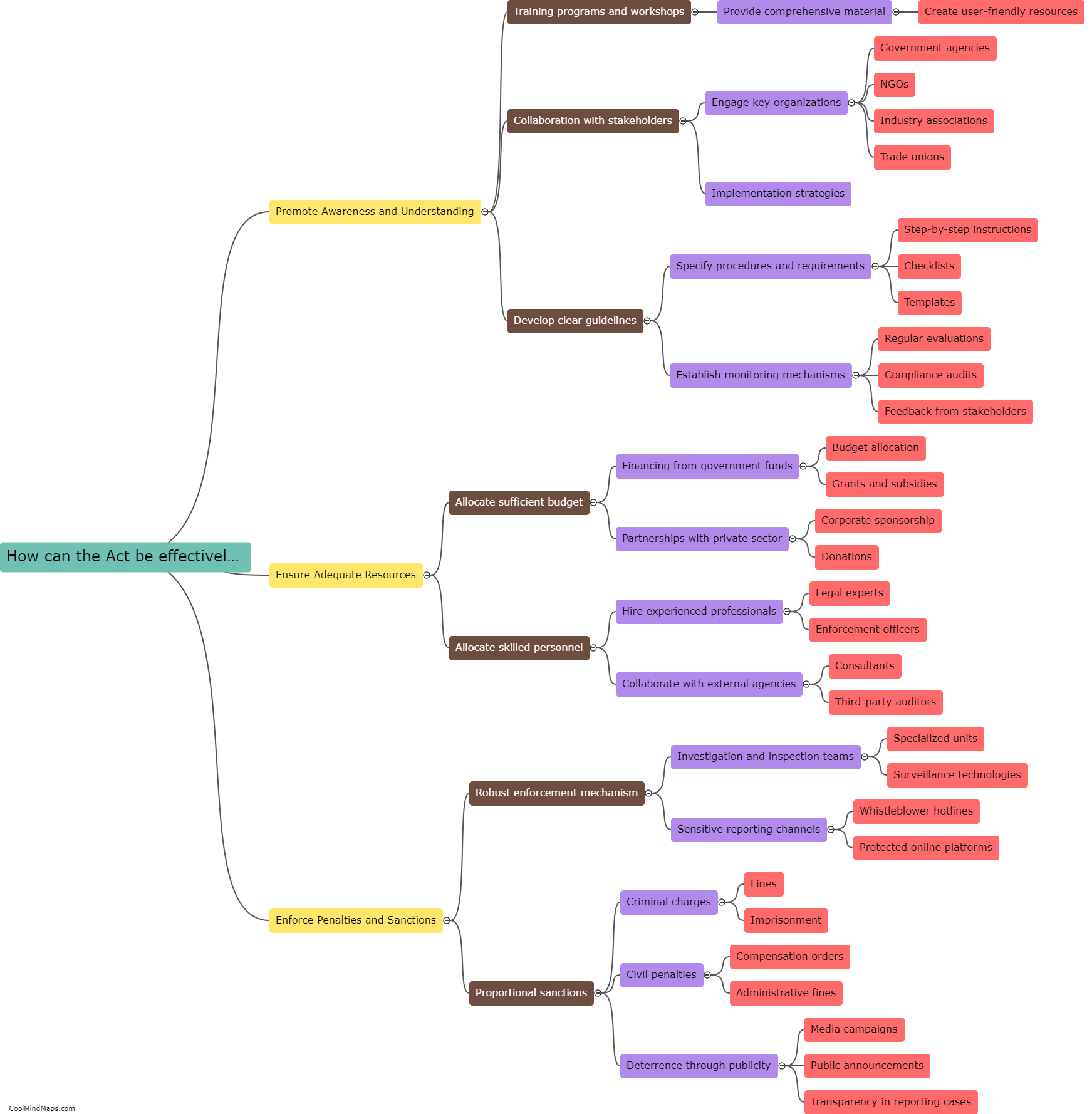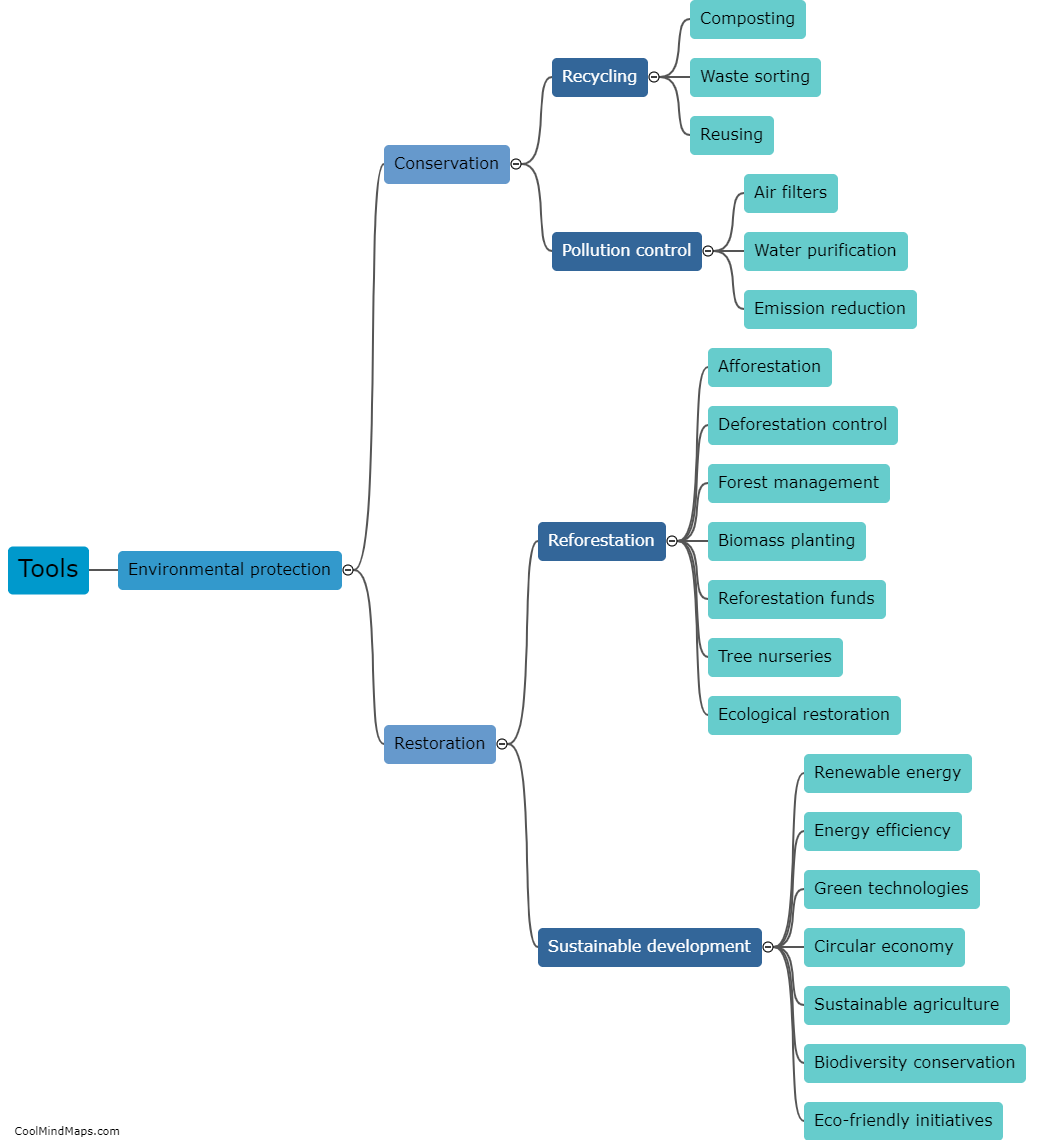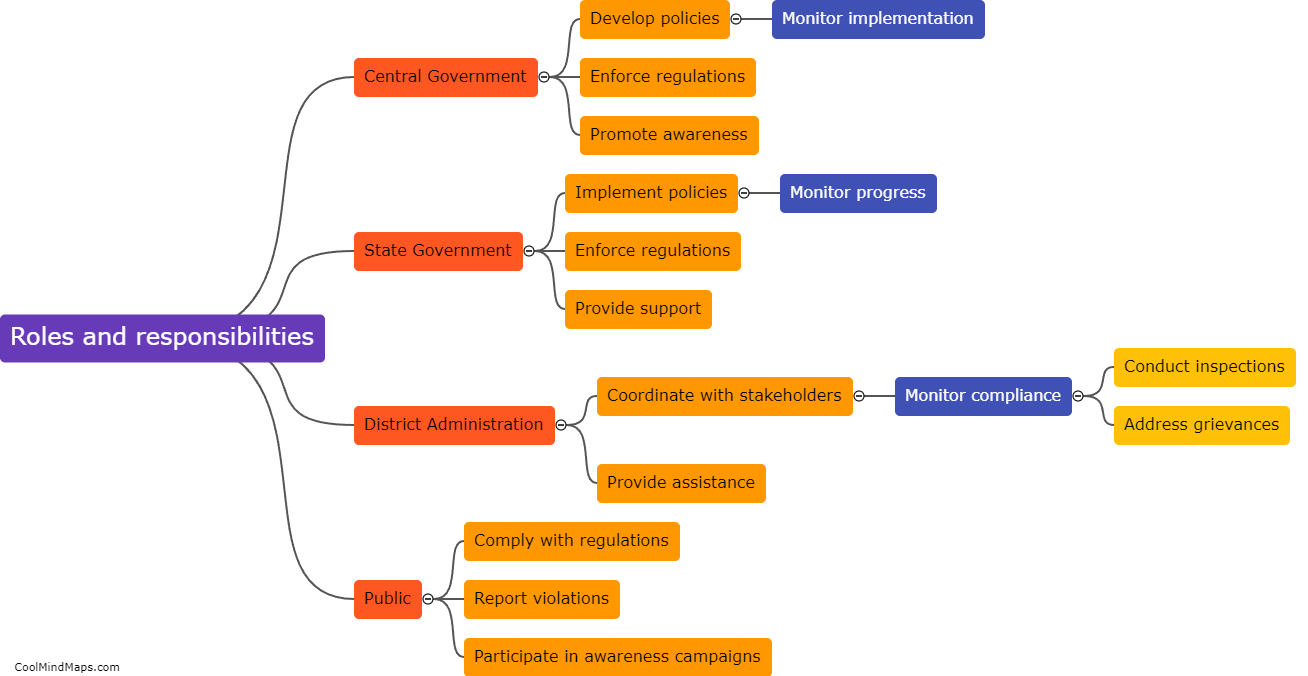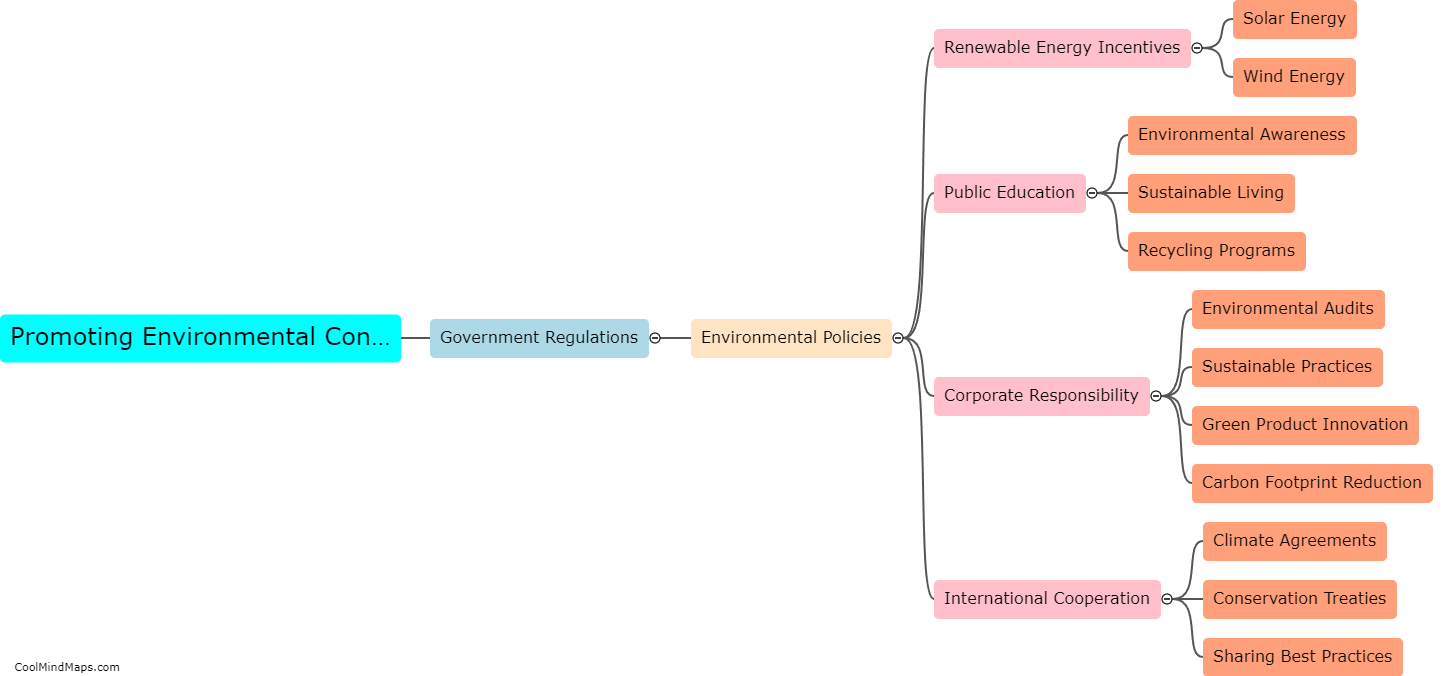How can the Act be effectively implemented?
To effectively implement an Act, several key steps should be followed. First, clear and concise guidelines should be drafted, outlining the objectives and provisions of the Act. These guidelines will serve as a roadmap to understand how the Act should be enforced. Second, adequate resources, including financial, human, and technological, should be allocated to ensure smooth implementation. This includes recruiting and training personnel, setting up systems for data collection and analysis, and creating public awareness campaigns. Third, regular monitoring and evaluation of the Act's implementation should take place to identify any gaps or areas for improvement. This feedback loop will help fine-tune the implementation strategies and address any challenges that may arise. Lastly, there should be collaboration and coordination among relevant stakeholders, including government agencies, private sector organizations, civil society groups, and the public, to ensure a shared understanding and ownership of the Act's goals. By following these steps, the Act can be effectively implemented, leading to its successful outcomes and benefits for society.

This mind map was published on 28 November 2023 and has been viewed 100 times.











